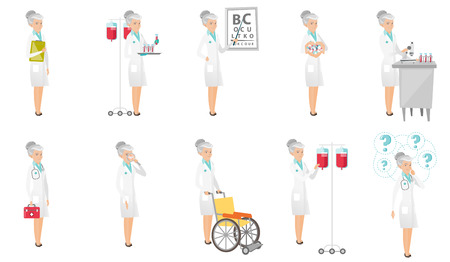Introduction: Navigating Diversity in UK Skin Clinics
Modern UK skin clinics are at the heart of a truly multicultural society. The United Kingdom, with its rich tapestry of ethnicities and cultural backgrounds, presents both unique challenges and invaluable opportunities for clinicians in the field of dermatology and aesthetic medicine. Patients attending skin clinics now represent a broad spectrum of skin types, tones, and sensitivities—each influenced by distinct genetic, environmental, and cultural factors. This diversity necessitates a shift away from one-size-fits-all protocols toward a more nuanced, individualised approach to treatment planning.
As the nation’s demographics continue to evolve, so too does the clinical imperative to tailor treatment protocols for optimal outcomes. The reality is that skin conditions manifest differently across varied phototypes, and responses to standard treatments can differ significantly depending on an individual’s background. For practitioners in the UK, this means adapting not just their technical skills, but also their cultural competence and communication strategies to better understand and serve every patient who walks through their doors. In this context, exploring real-world case studies becomes crucial—not only as a learning tool but also as a benchmark for best practice in delivering equitable and effective care.
2. Understanding Skin Types within a British Context
UK clinics today encounter a wide spectrum of skin types, reflecting the country’s increasingly multicultural population. The Fitzpatrick skin type classification remains the most commonly used tool to assess and guide treatment decisions in dermatology and aesthetic practices across Britain. This scale categorises skin types based on their response to ultraviolet (UV) exposure, helping clinicians predict risks such as hyperpigmentation or scarring, which are particularly relevant when adapting protocols for diverse patients.
Overview of Fitzpatrick Skin Types in UK Clinics
| Fitzpatrick Type | Typical Characteristics | UK Patient Demographics |
|---|---|---|
| I | Pale white skin, always burns, never tans | Common among people of Northern European descent |
| II | Fair skin, usually burns, tans minimally | Widespread in traditional British populations |
| III | Darker white skin, may burn, tans uniformly | Increasingly frequent in mixed-heritage communities |
| IV | Light brown skin, rarely burns, tans easily | Observed more with migration from Mediterranean regions and South Asia |
| V | Brown skin, very rarely burns, tans very easily | Common among Black Caribbean, South Asian and Middle Eastern backgrounds |
| VI | Dark brown or black skin, never burns, deeply pigmented | Prominent in African and Afro-Caribbean populations living in urban centres like London or Birmingham |
The Impact of Migration and Urbanisation
The demographic landscape of British cities has transformed over recent decades. Major metropolitan areas now serve as home to communities from all continents, bringing a greater variety of Fitzpatrick skin types into clinical settings. This cosmopolitan shift necessitates heightened awareness and ongoing education for practitioners, ensuring protocols are not only safe but culturally sensitive.
Clinical Considerations for UK Practitioners
The prevalence of darker Fitzpatrick types (IV–VI) is steadily increasing in urban clinics due to sustained migration trends. As a result, clinicians must be adept at recognising the subtle differences in presentation across this spectrum—such as the higher risk of post-inflammatory hyperpigmentation in melanin-rich skin—and tailor treatments accordingly. Establishing robust patient assessment protocols that account for both heritage and lifestyle is now essential for best practice in the UK context.

3. Protocol Modifications: Evidence-Based Approaches
In UK clinics, adapting dermatological treatment protocols to suit diverse skin types is not only a matter of clinical efficacy but also a commitment to inclusivity and patient safety. Traditional approaches, often based on studies with lighter skin tones, may not always translate seamlessly to patients with darker or mixed heritage skin. Therefore, clinicians are increasingly turning to evidence-based modifications that reflect the nuances observed in real-world practice. For example, laser and light-based therapies require careful calibration of wavelength and fluence to minimise the risk of post-inflammatory hyperpigmentation in Fitzpatrick skin types IV–VI. Similarly, topical retinoids and chemical peels are introduced more gradually, with tailored concentrations and additional emollient support to reduce irritation. Best practices include conducting patch tests prior to full treatments and maintaining open dialogue with patients about expected outcomes and potential risks unique to their skin type. Moreover, UK practitioners are encouraged to follow guidelines developed with input from multi-ethnic cohorts and to participate in ongoing training focused on cultural competence. This evolving approach ensures that protocols remain responsive and equitable, supporting positive clinical outcomes for all individuals regardless of skin tone.
4. Case Studies: Practical Implementation in UK Clinics
When examining how UK clinics adapt treatment protocols for diverse skin types, real-life case studies offer invaluable insight into best practices and challenges. Below, we present several examples from clinics across England, Scotland, and Wales that highlight practical strategies and successful outcomes in customising dermatological care for patients with varied skin tones.
Adapting Laser Treatments in London
A prominent London-based aesthetic clinic observed a higher incidence of post-inflammatory hyperpigmentation (PIH) among patients with Fitzpatrick Skin Types IV–VI receiving laser hair removal. To address this, clinicians adjusted the wavelength settings and introduced longer pulse durations, significantly reducing PIH cases while maintaining efficacy. Staff also underwent additional training on recognising subtle erythema in darker skin tones, ensuring accurate endpoint assessment during procedures.
Table 1: Protocol Adjustments for Laser Treatments by Skin Type
| Skin Type | Laser Wavelength | Pulse Duration | Cooling Method |
|---|---|---|---|
| I–III | 755 nm (Alexandrite) | Shorter (10–20 ms) | Contact Cooling |
| IV–VI | 1064 nm (Nd:YAG) | Longer (30–50 ms) | Cryogen Spray/Contact Cooling |
Chemical Peels Adapted in Birmingham
A multi-ethnic community clinic in Birmingham modified its chemical peel protocols after encountering increased sensitivity and uneven results in patients with medium to dark skin. The team shifted towards using lower concentration peels (such as mandelic acid) and staggered treatments over longer intervals. They also provided pre-peel priming regimens with topical retinoids or hydroquinone, which improved both safety and patient satisfaction.
Patient Feedback Highlight:
"I felt listened to when the nurse explained why my treatment would be slower and gentler than my friend’s. My results were great, and I had no dark patches afterwards."
Treating Eczema in Cardiff’s Diverse Population
A dermatology practice in Cardiff documented challenges diagnosing eczema in children with richly pigmented skin due to less visible redness and atypical presentation. The clinic developed an internal guide with photographic references representing a range of skin tones and incorporated family education sessions on recognising early signs. This led to earlier intervention and reduced rates of severe flare-ups among their young patients.
Table 2: Key Steps for Adapting Protocols Across Skin Types
| Step | Description | UK Clinic Example |
|---|---|---|
| Assessment | Identify unique presentation patterns based on skin tone. | Eczema recognition guide in Cardiff practice. |
| Treatment Selection | Select devices/products suitable for specific skin types. | Nd:YAG laser use for darker skin in London clinic. |
| Education & Training | Staff training on visual cues and cultural competence. | Birmingham clinic staff workshops on ethnic skincare. |
| Patient Communication | Explain rationale for protocol adjustments transparently. | Birmingham chemical peel consultations. |
These case studies demonstrate that thoughtful adaptation of treatment protocols—supported by ongoing staff education and open communication—results in safer, more effective outcomes for patients of all skin types across the UK.
5. Patient Perspectives and Collaborative Care
Engaging Patients in Their Treatment Journey
Patient engagement is a cornerstone of effective dermatological care, particularly when adapting treatment protocols for diverse skin types in UK clinics. By actively involving patients in discussions about their treatment options, clinicians can foster trust and ensure that individuals feel empowered throughout their care journey. This approach not only improves adherence to prescribed regimens but also enhances overall patient satisfaction.
Cultural Sensitivity in Clinical Practice
The UK’s multicultural landscape necessitates a culturally sensitive approach within clinical settings. Understanding cultural beliefs, skincare practices, and potential barriers to treatment—such as language or stigma—enables practitioners to tailor protocols more effectively. For example, recognising the significance of modesty in certain communities may influence how consultations are conducted or which products are recommended.
Open Communication: A Two-Way Street
Clear, open communication between patients and clinicians is vital for identifying concerns unique to different skin types, such as pigmentation changes or sensitivity to specific ingredients. Providing information in plain English and using visual aids where necessary can help bridge any knowledge gaps. Encouraging questions and fostering dialogue ensures that patients’ voices are heard and their preferences respected.
Collaborative Care for Better Outcomes
A collaborative care model—where decisions are made jointly between clinician and patient—has proven especially effective in UK clinics serving diverse populations. This partnership ensures that treatment protocols are not only medically sound but also aligned with each patient’s lifestyle and expectations. Ultimately, prioritising engagement, cultural sensitivity, and communication leads to improved clinical outcomes and greater patient confidence in the care they receive.
6. Challenges and Opportunities for UK Practitioners
UK practitioners face a unique set of challenges when adapting treatment protocols for diverse skin types, particularly within the multi-ethnic patient populations seen in British clinics. One of the most pressing barriers is the limited availability of comprehensive training resources specifically tailored to the nuances of treating different skin tones. Many courses and guidelines are still predominantly focused on lighter skin types, leading to knowledge gaps that can affect both clinical outcomes and patient confidence.
Resource constraints further complicate matters. Smaller clinics may struggle with budget limitations, making it difficult to invest in updated equipment, specialised products, or advanced training programmes that address the needs of all Fitzpatrick skin types. Staffing shortages and high patient volumes can also restrict practitioners’ ability to dedicate time to ongoing education or adapt protocols on a case-by-case basis.
Despite these obstacles, there are clear opportunities for growth. Clinic-wide implementation of inclusive protocols begins with leadership support and staff engagement. Establishing regular in-house training sessions—perhaps inviting guest experts experienced with skin-of-colour treatments—can foster team competence and confidence. Collaboration across clinics through regional peer networks or professional associations can help share best practices and practical solutions.
Strategic solutions for ongoing professional development include leveraging online learning platforms offering evidence-based modules on pigmentation disorders, scarring, and laser safety for darker skin types. Encouraging practitioners to attend national conferences such as those held by the British Association of Dermatologists ensures access to current research and networking opportunities with specialists working at the forefront of diversity in skin care.
Ultimately, investing in tailored patient assessment tools, expanding product ranges suitable for all skin types, and prioritising open communication with patients about their individual needs will help UK clinics deliver safer, more effective care. By proactively addressing these challenges, practitioners can turn resource constraints into catalysts for innovation and elevate standards across the sector.


